In the world of prepping and survival, being prepared for any situation is crucial. Whether it’s a natural disaster, societal collapse, or a personal defense scenario, knowing how to protect yourself and your loved ones is a top priority. Understanding how to win a gunfight is one of the most critical and potentially life-saving skills you can develop.
Key Takeaways
- Follow gun safety rules. Always handle guns as if they are loaded, point them in a safe direction, and keep your finger off the trigger until you are ready to shoot to prevent accidents.
- Practice often to get better at handling your gun and using tactics like taking cover, moving strategically, and communicating effectively in stressful situations.
- Always be alert and aware of your surroundings to spot potential threats early and plan how to avoid or handle them.
- Learn and use military strategies such as moving under cover, flanking enemies, and using concealment to improve your chances to win a gunfight.
- Understand local self-defense laws, including when you can use force and what your rights are, to ensure your actions are legally defensible.
This comprehensive guide highlights the strategies, techniques, and mindset needed to emerge victorious in a life-threatening confrontation. From choosing the right firearms and honing your shooting skills to mastering situational awareness and mental preparation, it’ll provide you with the essential knowledge to increase your chances of survival.
Basic Gun Safety Principles
Basic gun safety starts with understanding and following core principles. Always treat every firearm as if it’s loaded, regardless of whether you believe it to be unloaded. This mindset prevents careless handling and accidental discharges. Additionally, never point the gun at anything you don’t intend to shoot, ensuring that you maintain control over where your firearm is aimed at all times.
Keeping your finger off the trigger until you’re ready to fire is another fundamental rule. This prevents accidental shootings and ensures that you only discharge the weapon intentionally.
Here are additional gun safety principles to follow:
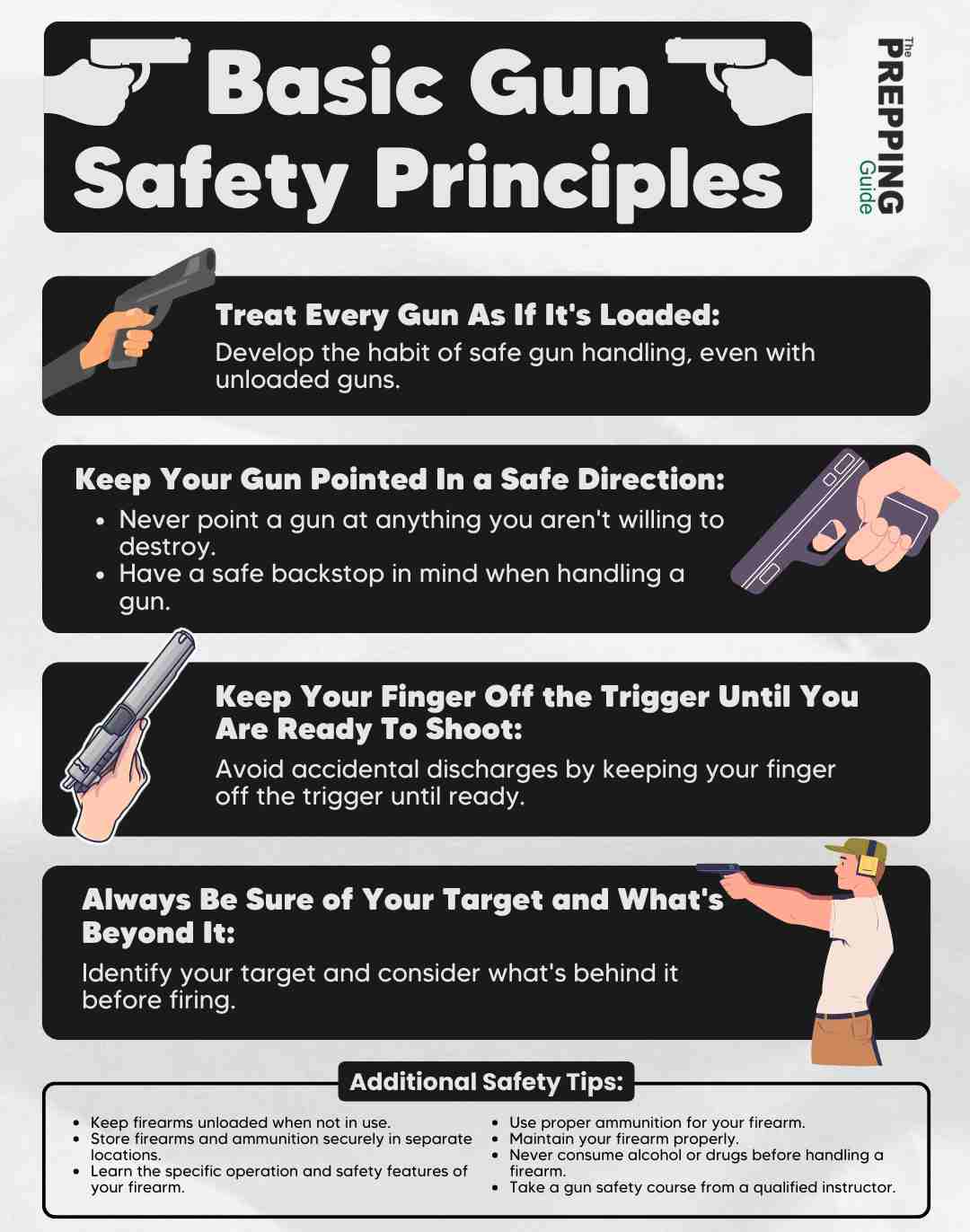
Importance of Proper Training and Handling
Proper training is essential for anyone who owns or uses a firearm to ensure safe and effective handling. Training programs teach you not only how to shoot accurately but also how to handle your weapon safely and effectively. This training helps develop muscle memory and confidence, enabling you to react appropriately in high-stress situations.
Regular practice is equally important. Frequent visits to the shooting range allow you to hone your skills and stay familiar with your firearm’s operation. Professional training courses, especially those that simulate real-life scenarios, can further enhance your preparedness and ensure that you can handle your firearm with precision and care.
Secure Storage and Maintenance of Firearms
Secure storage is a critical aspect of gun safety. Keeping your firearms locked away and out of reach of unauthorized individuals, particularly children, prevents accidental injuries and unauthorized use. Using gun safes, lockboxes, or trigger locks are effective methods to ensure that your firearms are secure when not in use.
Regular maintenance of your firearm is also essential. Cleaning and inspecting your weapon ensures that it operates reliably and safely. Neglecting maintenance can lead to malfunctions, which can be dangerous in critical situations.
Preparation and Awareness

Situational awareness is the foundation of personal safety. It’s about constantly being alert to your surroundings, identifying potential threats, and planning escape routes. This vigilance allows you to spot trouble early and avoid it altogether. In unfamiliar areas, for example, be mindful of exits, people’s behavior, and anything suspicious.
Practicing situational awareness is proactive, not reactive. Regularly scan your surroundings and trust your gut if something feels wrong. Simple steps like confident walking, avoiding phone distractions, and staying in well-lit, populated areas can deter criminals and give you time to react effectively if needed.
Beyond situational awareness, consider these steps to enhance your overall safety:
Mental Preparation: Train your mind to manage stress and fear in high-pressure situations. Techniques like visualization and mental rehearsals can help you plan responses to various scenarios. Stress inoculation training, which exposes you to controlled stressors, can also improve your coping mechanisms.
Physical Preparation: Being physically fit improves your stamina, strength, and reaction time. Regular exercise, including cardio, strength training, and agility drills, can enhance your ability to move decisively during a confrontation. Drills that simulate real-life scenarios can further sharpen your reflexes for any eventuality.
Understanding Gun Fight Dynamics
Grasping the dynamics of a gunfight can significantly impact your strategy and effectiveness in such situations. Key factors like positioning, using cover, and effective communication are essential components that can influence the outcome and win a gunfight.
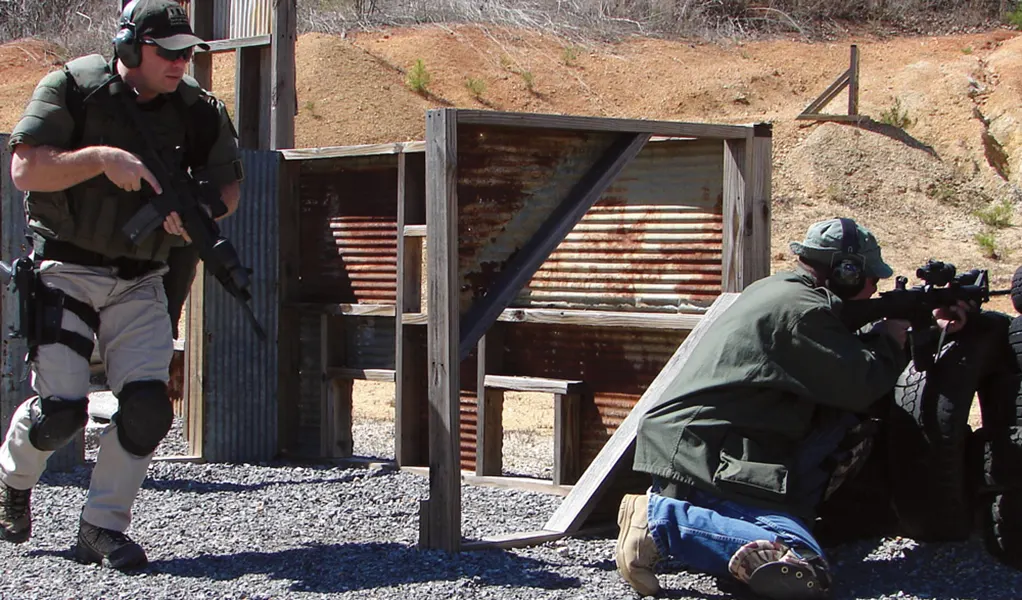
The Importance of Positioning in a Gun Fight
Positioning is a critical factor in a gunfight that can determine your advantage or disadvantage. Good positioning involves finding a spot that maximizes your visibility of the area while minimizing your exposure to potential threats. Position yourself in a way that you have clear sightlines to detect incoming threats early and ample cover to protect yourself.
Being mindful of your surroundings and using them to your advantage can significantly improve your chances of survival. For instance, positioning yourself in a corner of a room can limit the directions from which you can be attacked, giving you a better defensive stance. Always consider how your position affects your visibility and vulnerability in a confrontation.
Using Cover Effectively in Combat Situations
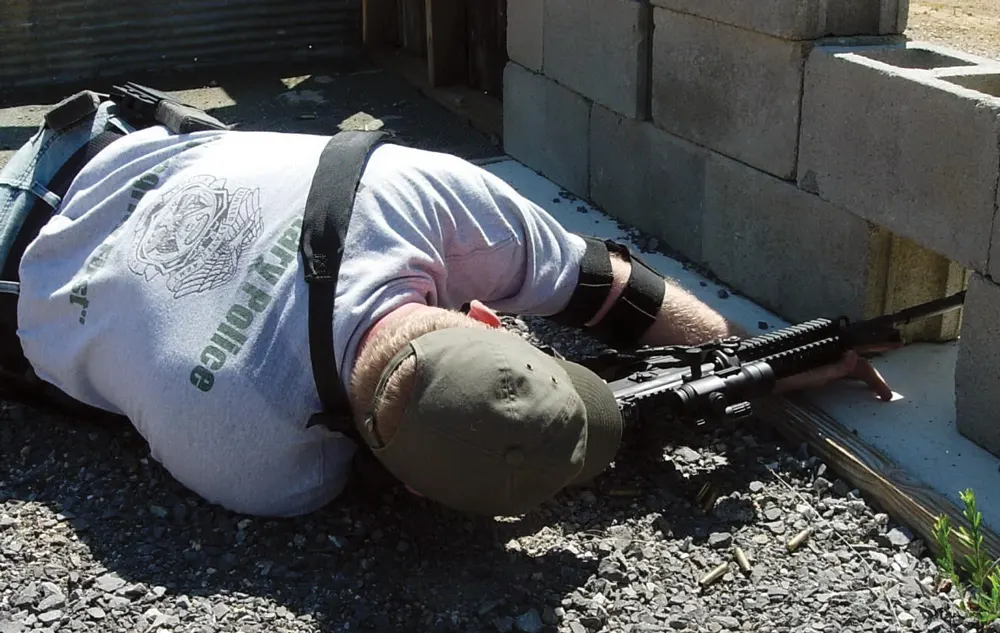
Cover is anything that provides protection from incoming fire, while concealment hides you without necessarily providing protection. Using cover effectively means knowing when and how to move between cover points while minimizing your exposure. To win a gunfight, always move from cover to cover, staying low and making yourself a smaller target.
Practicing these movements regularly can make them second nature, allowing you to instinctively seek out and use cover effectively in real situations. Remember, cover can range from solid objects like walls and vehicles to more temporary barriers like furniture. Identifying and utilizing available cover can provide crucial protection and strategic advantage to win a gunfight.
Effective Communication During a Gun Fight
Communication can be the difference between coordinated action and chaos. Whether you are alone or with a team, effective communication ensures everyone knows the plan and can react appropriately to changes. Simple, clear signals and predetermined hand gestures can convey critical information without speaking.
In high-stress situations, verbal communication might be challenging, so practicing non-verbal cues and signals with your team can enhance coordination. This preparation allows for silent, efficient communication, ensuring that everyone remains informed and synchronized, significantly increasing the chances of a successful outcome.
Key Military Gun Fight Tactics
Military tactics are designed to maximize effectiveness and survivability in combat situations. Understanding and applying these tactics can significantly enhance your ability to respond effectively and win a gunfight.
Movement Tactics
1. Cover & Concealment
Cover and concealment are the cornerstones of survival and to win a gunfight. Sample cover like walls or vehicles, shields you from bullets, while concealment, like bushes or shadows, hides you from sight but offers no real protection. The key to utilizing both effectively is coordinated movement.
Before the shooting starts, scan your environment for potential cover – parked cars, concrete barriers, anything that can stop bullets in an urban setting. Plan your movements between these points, minimizing the time you spend exposed. This way, you can use concealment to reach better firing positions behind cover, flanking your opponent if the situation allows. Remember, staying mobile and unpredictable behind cover is crucial for gaining the tactical advantage.
2. Fire & Maneuver
The fire and maneuver tactic entails one group delivering suppressive fire as another shifts to a superior position. This joint effort can hold the enemy in place, diminishing their capacity to return accurate fire. It’s a method demanding practice and teamwork but proves highly effective in combat.
For example, in a team setting, one member provides suppressive fire to distract the enemy while another advances to a flank or moves closer. This approach facilitates safe advancement or repositioning, making it challenging for the enemy to anticipate and counteract your actions.
3. Flanking
Flanking involves moving around the side of an enemy position to attack from an angle where they are less defended. This tactic exploits the enemy’s vulnerabilities and can significantly increase your chances of success. Flanking forces the opponent to divide their attention and can often lead to confusion and panic on their part.
When executing a flank, it’s crucial to move quickly and use available cover. The goal is to catch the enemy off guard, attacking from a position where they least expect it. To win a gunfight means surprising the enemy from a flanking position that can decisively tilt the odds in your favor.
Communication & Coordination
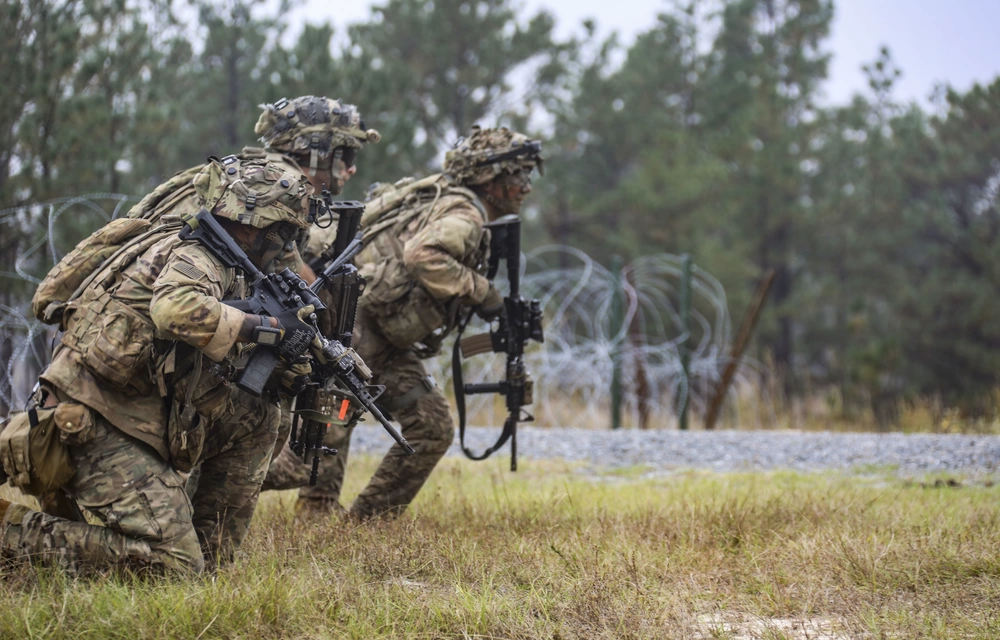
4. Team Signals
Effective communication is vital to win a gunfight, especially when operating as part of a team. Using predetermined signals, such as hand gestures or flashlight blinks, can convey essential information quickly and silently. This non-verbal communication is crucial in maintaining stealth and coordination without giving away your position.
Establish a set of signals with your team and practice them regularly. For example, a raised fist might mean “stop,” a flat hand could indicate “move forward,” and a pointed finger might signal “enemy spotted.” Clear and consistent signals ensure that everyone on the team understands the situation and can act accordingly without the need for verbal commands.
5. Battle Drills
Battle drills are pre-planned responses to common combat scenarios, practiced until they become second nature. These drills cover actions such as reacting to contact, breaking contact, and assaulting an objective. Regular practice of battle drills ensures that every team member knows their role and can execute it under stress.
For instance, a standard drill might involve immediately seeking cover and returning fire when ambushed. Each member of the team has a specific role, whether it’s providing suppressive fire, flanking, or securing an escape route.
Weapon Handling
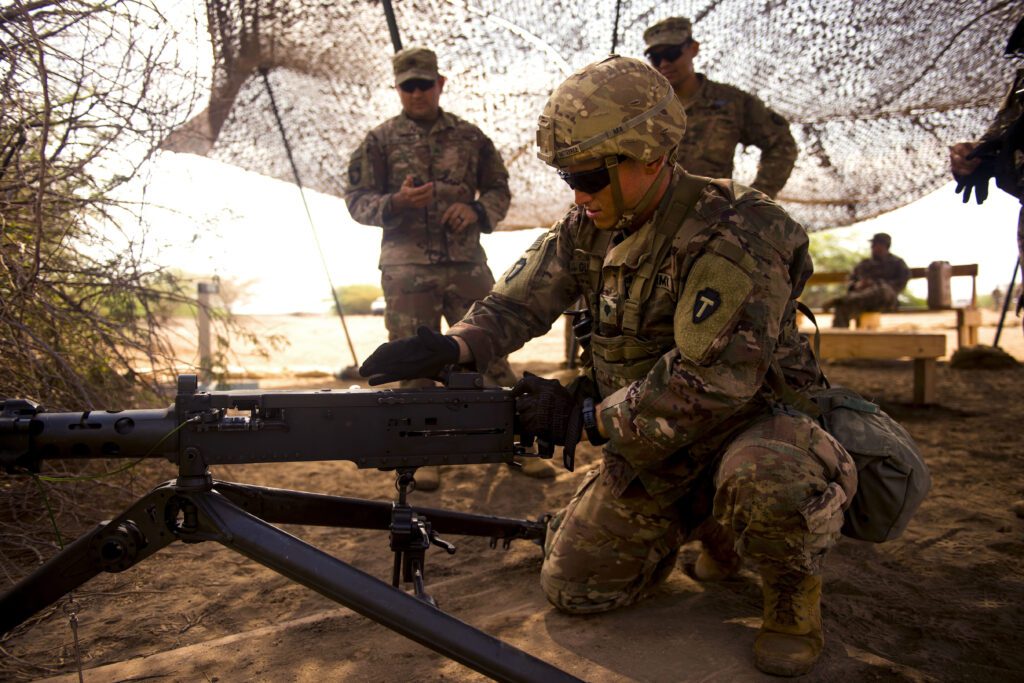
6. Reloading
Reloading efficiently and safely is a critical skill to win a gunfight. An improperly timed or executed reload can leave you vulnerable. Practice reloading your weapon until it becomes a smooth, automatic action. This includes both tactical reloads, where you replace a partially spent magazine with a full one during a lull, and emergency reloads, performed when your magazine is empty.
To practice, set up drills where you reload while moving, under time constraints, or in various positions. This simulates the stress and unpredictability of a real gunfight, ensuring that you can maintain your composure and continue to engage effectively even when reloading.
7. Trigger Discipline
Trigger discipline means keeping your finger off the trigger until you’re ready to shoot. This simple yet essential habit prevents accidental discharges and ensures that every shot you take is intentional. Proper trigger discipline also enhances your accuracy and control, as you’re less likely to flinch or jerk the trigger.
Always practice keeping your finger indexed along the frame of your firearm until you’re on target and ready to fire. This habit should be ingrained through regular training, making it second nature in any situation, whether you’re at the range or in a real-life encounter.
Adaptability in Changing Situations
8. Improvisation
Adaptability and improvisation are crucial when plans go awry. No plan survives first contact with the enemy, and being able to think on your feet and adapt to changing circumstances can be the key to survival. Improvisation involves using available resources creatively, whether it’s finding unexpected cover, using improvised weapons, or altering your strategy on the fly.
For instance, if your primary escape route is blocked, quickly identifying an alternative path can be the difference between safety and danger. Regularly challenging yourself with scenario-based training can improve your ability to improvise effectively, ensuring you’re prepared for the unexpected.
9. Flexibility in Strategy
Flexibility in strategy means being open to changing your plan as the situation evolves. Rigidly sticking to a plan that isn’t working can lead to failure. Instead, continuously assess the situation and be prepared to shift tactics as needed. This might involve retreating, regrouping, or changing your objective based on new information or developments.
In training, practice scenarios where the situation changes unexpectedly, forcing you to adapt your strategy. This not only builds your ability to remain flexible but also enhances your decision-making skills under pressure, ensuring you can adjust and respond effectively in real combat scenarios.
Building Effective Training Regimens
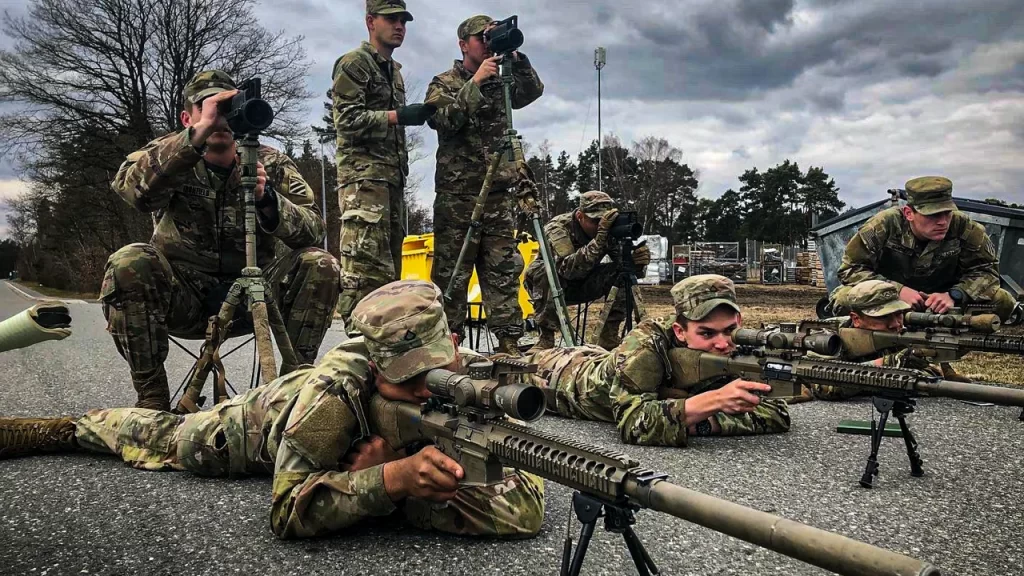
To win a gunfight and master tactics and skills, you need a structured training program with situational drills, stress inoculation, and regular weapon handling exercises.
Components of a Structured Training Program
A complete training program includes:
- Basic Marksmanship Training: Marksmanship principles develop accuracy and proficiency with your firearm.
- Scenario-Based Training: Practice responses to different threats and situations, like home invasions or active shooter scenarios, to build situational awareness and decision-making skills.
Incorporating Situational Drills into Training:
Practice drills that simulate real-world encounters, such as identifying threats, finding cover, and engaging targets under time constraints. Use tools like laser guns and electronic armor to enhance maneuvering and shooting skills safely and cost-effectively. Studies have shown that using such systems in situational drills enhances maneuvering and shooting skills while ensuring safety and cost-effectiveness.
Stress Inoculation and Its Importance:
Train under controlled stressors, such as loud noises or physical exertion, to develop coping mechanisms and resilience. This helps you stay calm, focused, and decisive during high-stress situations.
Weapon Handling Exercises for Skill Improvement:
Regularly practice drawing, aiming, shooting, reloading under pressure, and clearing malfunctions. Include dynamic exercises to improve your accuracy and ability to engage targets while moving. Continuously challenge yourself to keep your skills sharp and adaptable.
Understanding the Legalities
Knowing how to handle a firearm in self-defense is crucial, but understanding the legal framework surrounding its use is equally important. Self-defense laws vary by location, but they all share core principles. By familiarizing yourself with these principles, you can ensure your actions are justifiable and protect yourself from legal repercussions in a critical situation.
Here is an overview of self-defense laws:
Stand Your Ground
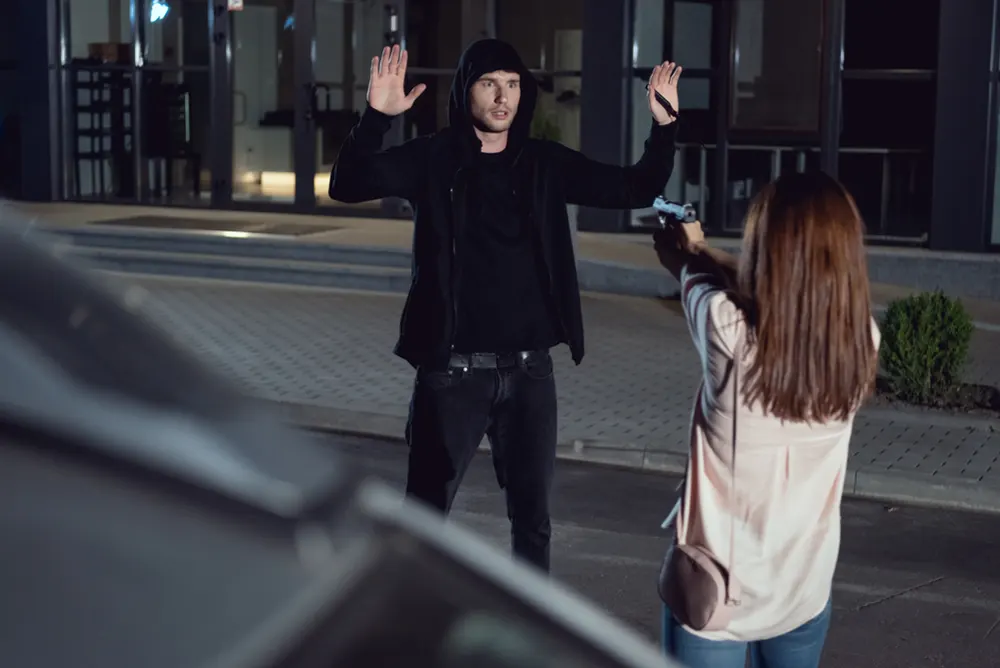
These laws allow individuals to use force, including deadly force, in self-defense without the duty to retreat, regardless of where they are. As of recent updates, 35 states have implemented stand-your-ground laws.
- Alabama
- Alaska
- Arizona
- Connecticut
- Delaware
- Florida
- Georgia
- Hawaii
- Idaho
- Indiana
- Iowa
- Kansas
- Kentucky
- Louisiana
- Michigan
- Mississippi
- Missouri
- Montana
- Nevada
- New Hampshire
- Nebraska
- North Dakota
- North Carolina
- Ohio
- Oklahoma
- Pennsylvania
- South Carolina
- South Dakota
- Tennessee
- Texas
- Utah
- West Virginia
- Wisconsin
- Wyoming
States like Florida, Texas, and Arizona are prominent examples where individuals can legally use force in self-defense if they believe it is necessary to prevent imminent death or great bodily harm. Florida’s law, for instance, specifies that a person has no duty to retreat and can use force if they are not engaged in unlawful activity and are in a place where they have a right to be.
Duty to Retreat
In contrast, some states mandate that individuals must attempt to retreat from a threatening situation if they can do so safely before using force. States that follow the duty to retreat include New York and Connecticut. In these states, the use of deadly force is typically justified only if the person believes they are in imminent danger of death or serious injury and cannot safely retreat.
Castle Doctrine
This principle, a subset of self-defense laws, applies primarily to defending oneself within one’s home. It states that individuals have the right to use reasonable, even deadly, force to protect themselves against an intruder without the duty to retreat. Many states have codified and sometimes expanded the Castle Doctrine to include places like vehicles and workplaces. States like Texas and Georgia include expansive Castle Doctrine provisions.
Civil Immunity and Burden of Proof
Some states provide civil immunity to individuals who use force in self-defense under certain circumstances, meaning they are protected from lawsuits filed by the attacker or the attacker’s family.
States like Arizona, Florida, and Georgia include such provisions. Additionally, a few states have shifted the burden of proof to the prosecution in self-defense cases, requiring prosecutors to disprove the self-defense claim rather than the defendant proving it was reasonable.
Consequences of Illegal Gun Use
The repercussions of illegal gun use can be severe, ranging from criminal charges to civil lawsuits. Engaging in unauthorized or excessive use of force can lead to serious legal consequences, including imprisonment and hefty fines.
Moreover, if your actions are deemed reckless or unjustified, you might also face civil litigation from the victim or their family, further complicating your situation. In 2019, data shows there were 8,481 federal convictions for illegal firearms possession. Most of these convictions resulted from guilty pleas, with only a small fraction of cases going to trial.
Conclusion: Mastering Military Tactics for Survival
Understanding and mastering military gunfight tactics can significantly enhance your ability to protect yourself and others in life-threatening situations. The combination of situational awareness, proper training, and adherence to gun safety principles forms the foundation of effective self-defense. By incorporating the key elements of positioning, using cover, and maintaining effective communication, you can improve your chances of survival and win in a gunfight.
Furthermore, regular practice and realistic training scenarios ensure that these skills become second nature, allowing you to respond quickly and effectively under pressure. Remember, the goal is not only to survive but to do so safely and responsibly. Always stay informed about the legal aspects of self-defense to ensure that your actions are justified and within the bounds of the law.
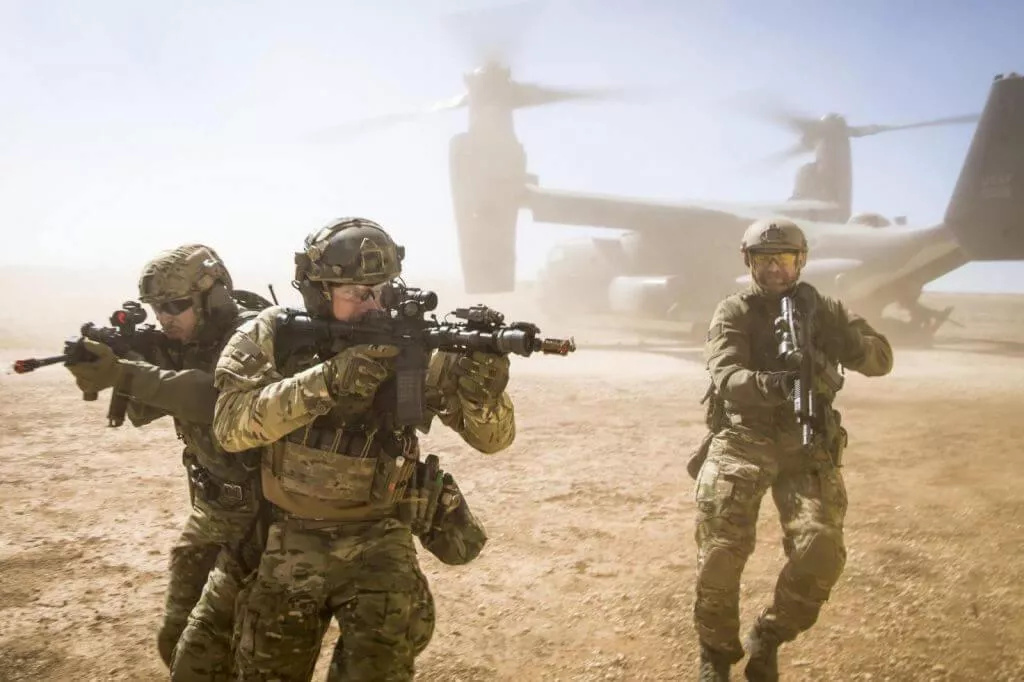
FAQs
Who wins in a gunfight?
To win a gunfight often depends on several factors, including situational awareness, training, and the ability to stay calm under pressure. Those who have practiced extensively, understand their environment, and can make quick, decisive actions are more likely to come out on top.
What is the average distance for a gun fight?
Gunfights typically occur at close ranges, often within 7 to 10 yards. This proximity emphasizes the importance of quick reactions, accurate shooting, and effective use of cover and concealment. Training for these short distances can significantly improve your chances of survival.
How does a gun duel work?
A gun duel involves two individuals facing off with firearms, traditionally at a predetermined distance, often in a formalized setting. The participants usually aim to draw and fire as quickly as possible, with the objective of hitting the opponent while avoiding being hit. While historical duels were governed by specific rules and codes of conduct, modern confrontations are far more unpredictable and chaotic.

Title should have been preparing for a gunfight. Because if you try to remember if you have all the boxes checked, your already dead.
That is very true Lane. But let’s just hope none of the readers get into a gun fight.
So far I only had one out of a few thousand that admitted to being in a gun fight. It was a German person who was eventually assisted by police.
This reads like it was written by someone who not only failed English in high school but someone that has no clue about weapons or tactics! And yes I know both having been a Seal team member. Now repeat after me “this is my weapon, this is my gun, this one is for fighting this one is for fun”.
dont run out of ammo
It is little bit hard to give much credibility to someone who refers to “rounds” as “bullets” and the “bed” of pick up truck as the “tray.” FYI the bullet is the projectile that come out of barrel.
There’s actual substance in this article. Good job.
Cheers Steve!
extremely valuable. thanks for making it.
You lost me at the 33 round “normal” Glock mag.
All this things are wonderful for a movie, I just can say the first on the sights is the first alive
Cheat. A fair fight is one you will lose
How often we will have a buddy during a gunfight? Yeah, no. We don’t patrol the streets in pairs. We go in the 7-11, the bank, the store, alone. Don’t train as if you have an equal buddy there for suppression fire support.
Let’s get a story on winning a solo gunfight.
A large number of Amer. gun owners do not take the time to learn how to use their guns SAFELY. Many select weapons that have a “MACHO” reputation or image. A lot of police officers bought .44 magnums because of the ” Dirty Harry” movies. Then the learned about it’s fierce recoil.
Left of Bang…..get the book.
1st shoot the assailant anywhere in the torso area, even if they have body armor. In most cases this will cause them to bend over due to the power of the impact, immediately fire round two into the top of their head or the area of the neck between their helmet and Cody armor. In most cases the battle is at close quarters, if not retreat ,set up and wait for them to get to close quarters calmly wait to execute the exercise as explained. If they follow you they are intent on killing you. Game over!